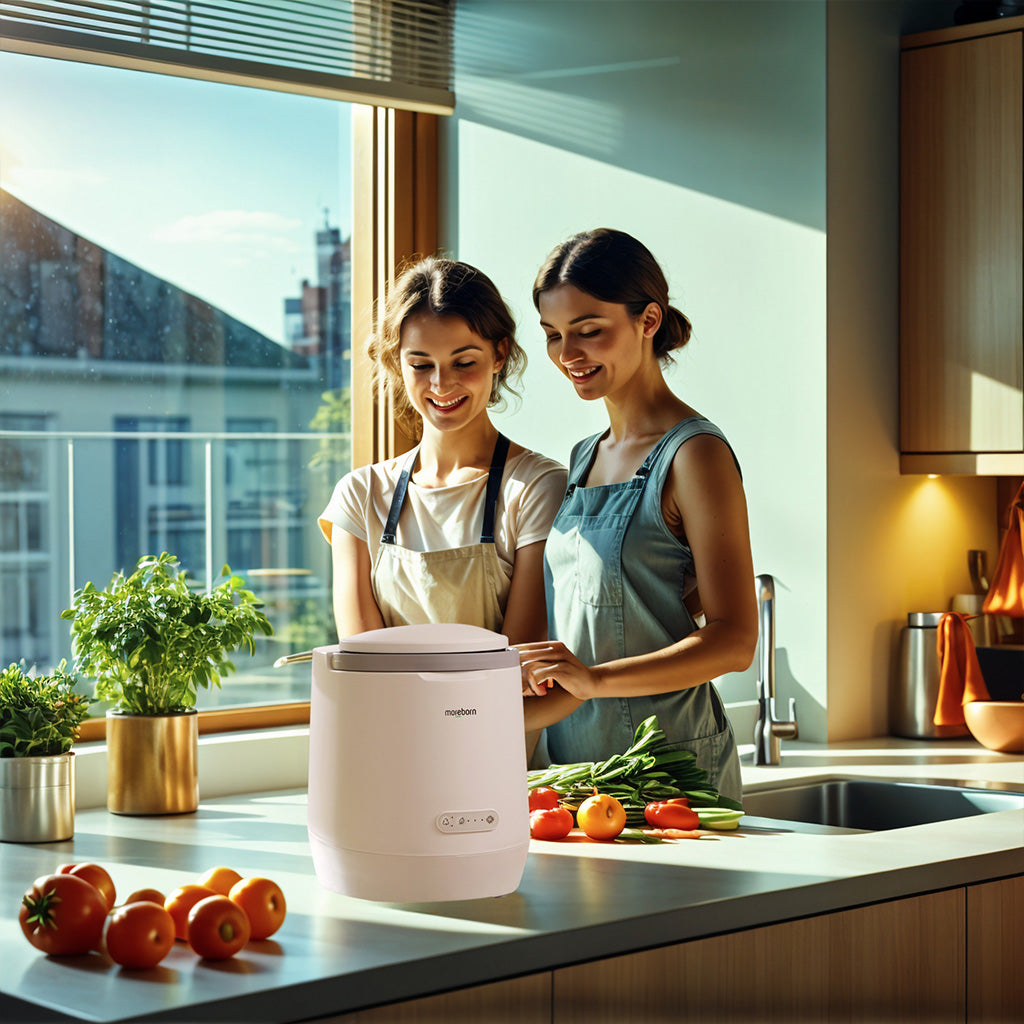
Turn Food Waste into Fertilizer at Home: Why Apartment Dwellers Need a Food Waste Recycler 🌱
Share
The average American apartment generates 482 lbs of food waste yearly (EPA 2024), releasing methane 28x more potent than CO₂. But what if your banana peels could become garden gold instead of climate villains? Enter electric compost machines - the silent heroes of sustainable cities.
🔥 The Urban Waste Crisis
-
72% of landfill methane comes from organic waste (IPCC AR6)
-
Apartment composting reduces household carbon footprint by 481kg CO₂e/year
-
Traditional methods fail in small spaces (odor, pests, time)
🆕 2024's Breakthrough: Electric Composters Modern units like the Moreborn MB4 solve urban challenges:
✅ 4-hour processing (vs 6+ months outdoors)
✅ 38dB operation - quieter than a refrigerator
✅ ETL-certified for meat/dairy (no salmonella risk)
📊 Top 3 Machines for Apartments
| Model | Cycle Time | Capacity | Special Feature |
| Moreborn FC-200 | 4 hrs | 4L |
Fster & easy |
| L**i | 8 hrs | 3L | Direct plumbing connection |
| F*****r | 6 hrs | 4L | Charcoal odor filter |
💡 User Case Study
"Our MB4 processes 2kg daily - that's 919kg CO₂e diverted yearly. It paid itself off in 14 months through reduced trash fees." - Sarah K., NYC
FAQ Section
Q: Can compost machines handle bones?
A: Only NSF-certified models like the Moreborn MB4 safely process hard materials.
Q: Do they increase electricity bills?
A: Modern units use 0.07kWh/cycle - about $0.25/month (based on 2024 DOE rates).
Q: Maintenance required?
A: Self-cleaning function - no messy cleanup needed!
Citations
-
Methane equivalency data: EPA GHG Calculator
-
Noise level comparisons: Consumer Reports Appliance DB
